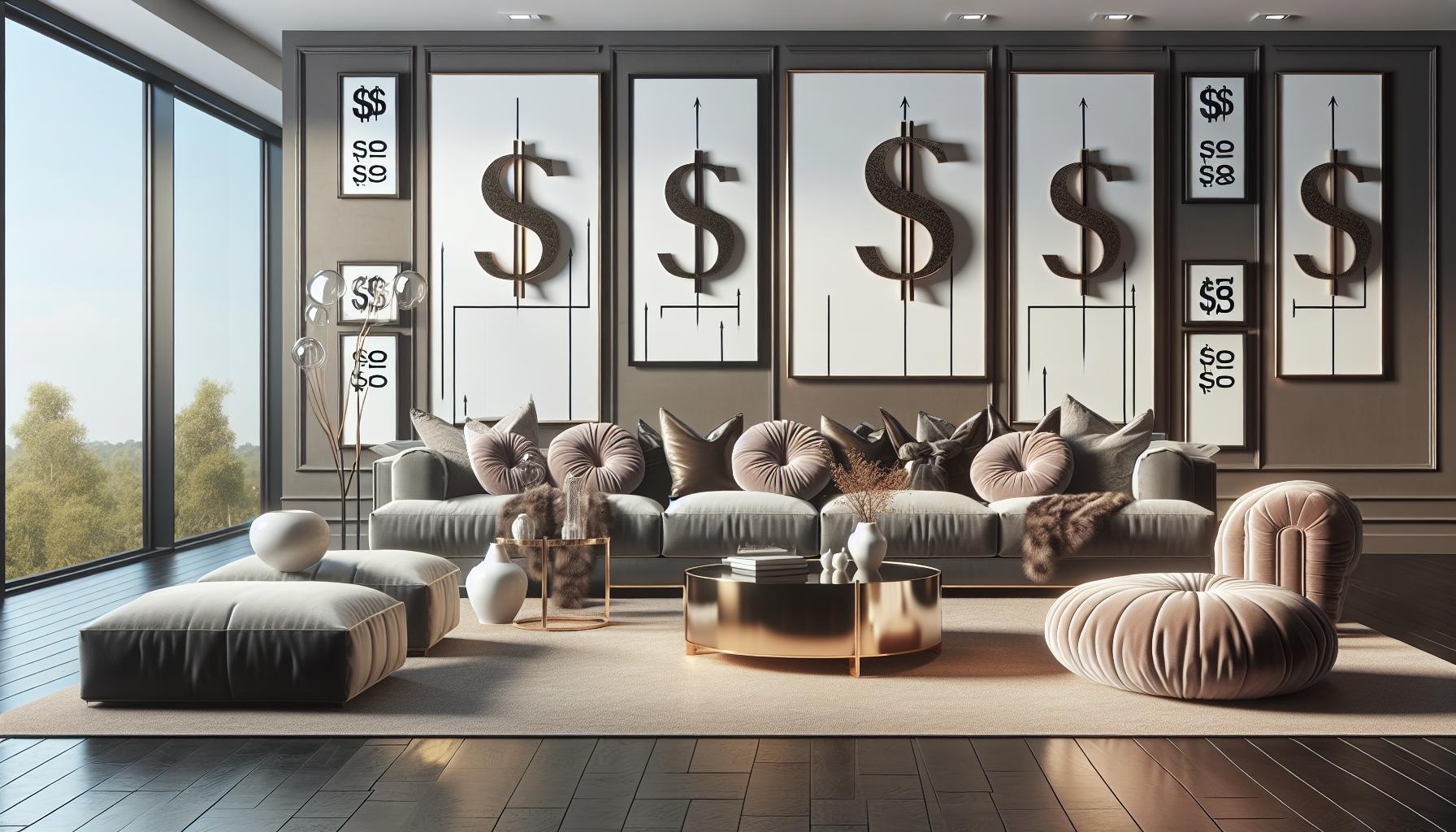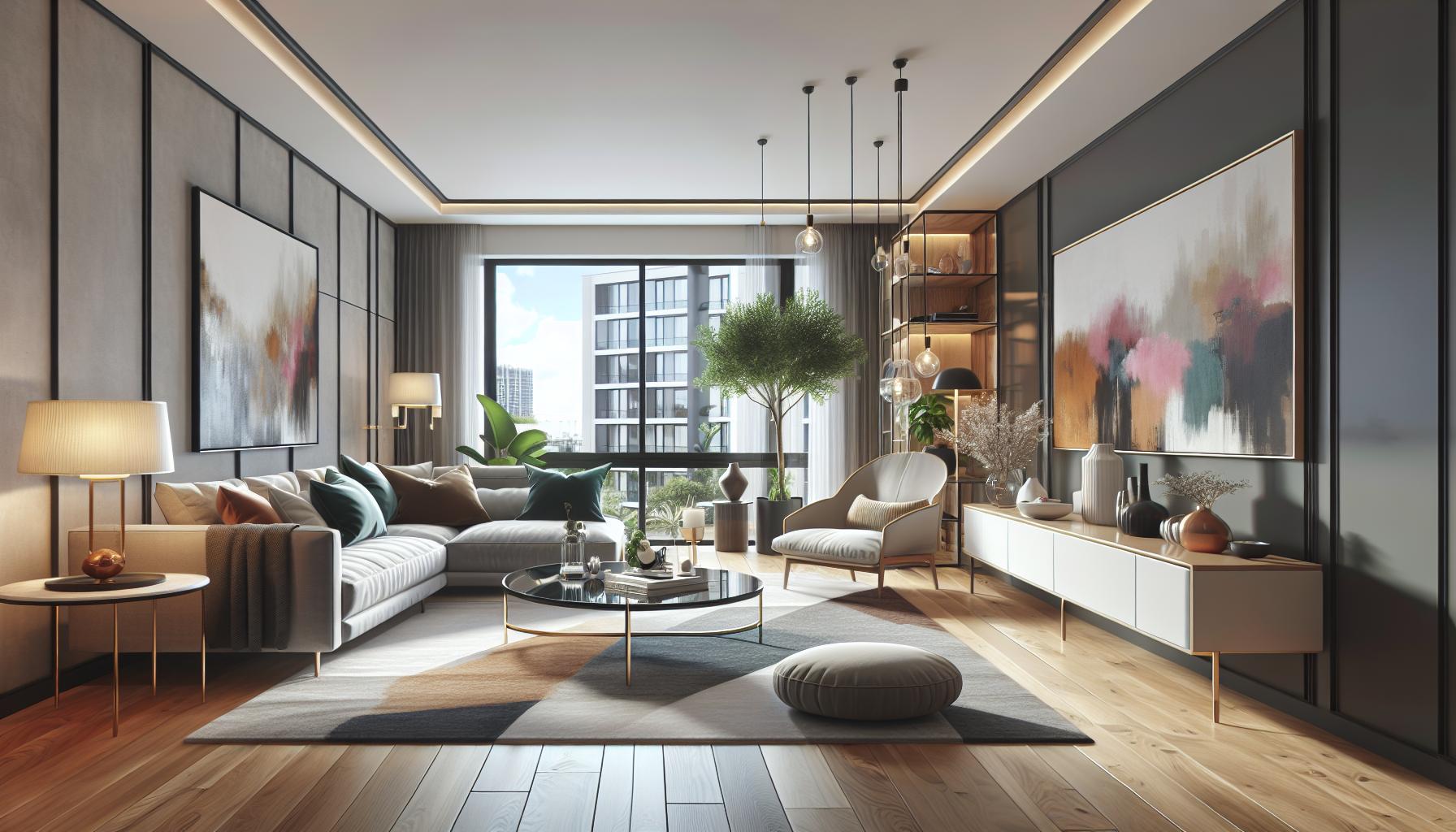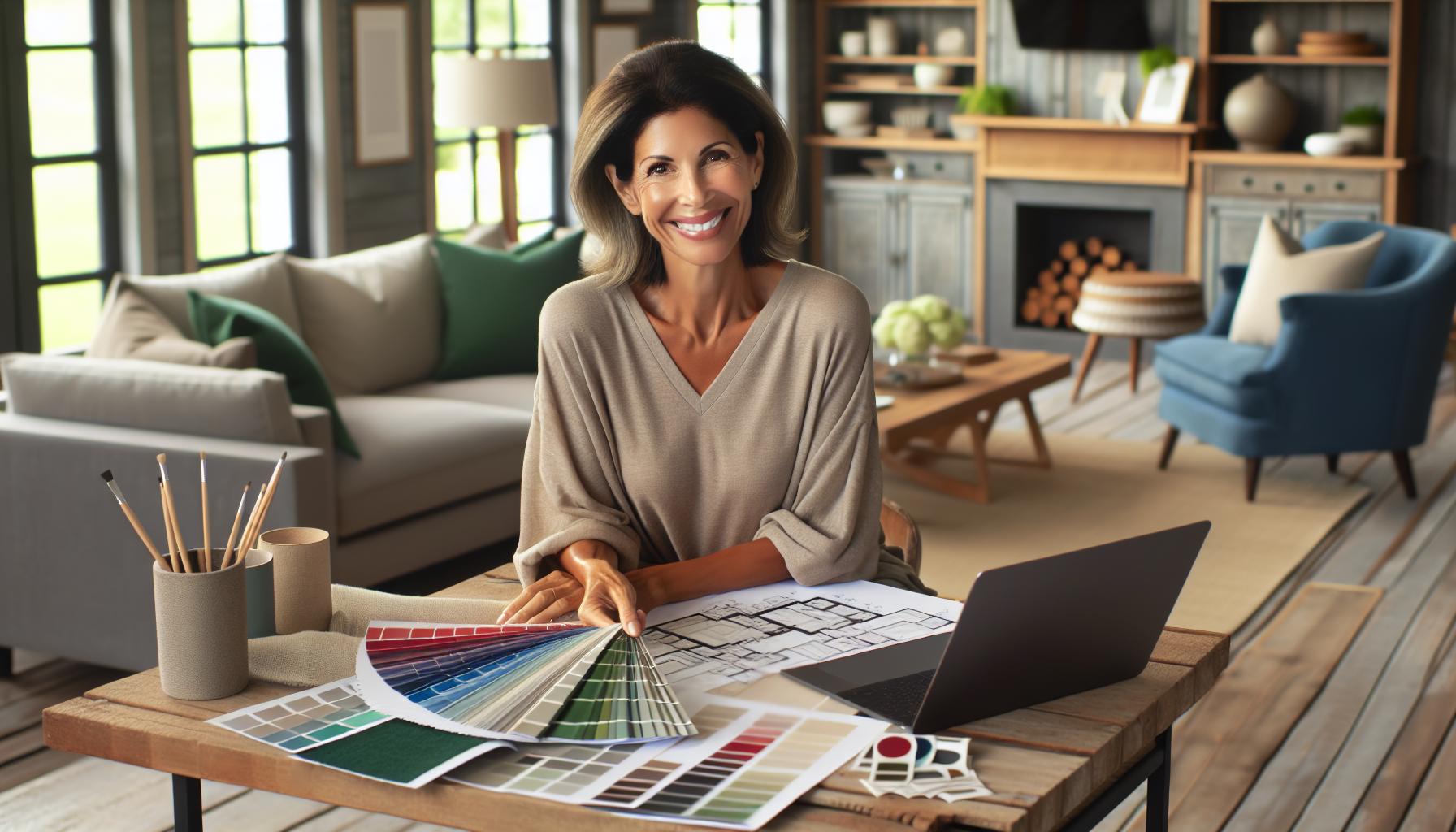Transforming a space into a dream home is an exciting journey, but understanding the costs of interior design can be daunting. As someone who’s navigated the world of design, I know how crucial it is to balance style with budget. Whether you’re planning a simple refresh or a complete overhaul, knowing what to expect financially can help make the process smoother and more enjoyable.
In my experience, interior design costs can vary widely depending on factors like room size, design complexity, and material choices. It’s not just about picking the right paint color or furniture; it’s about creating a cohesive environment that reflects your personality while staying within budget. I’ll guide you through the essentials, ensuring you’re well-prepared to make informed decisions without any unwelcome surprises. Let’s dive into the world of interior design costs and uncover how to achieve your vision while keeping expenses in check.
Key Takeaways
- Understanding interior design costs is essential for balancing style with budget, as expenses vary based on room size, design complexity, and material choices.
- Factors like the size of the space, project scope, materials, and designer expertise significantly influence the overall cost of a design project.
- For residential projects, interior design costs typically range from $2,000 to $30,000 depending on room type and materials used, while commercial project costs vary by business type and square footage.
- Effective budgeting involves setting realistic expectations, prioritizing essential features, and strategically allocating funds to maximize the design budget.
- Cost-saving strategies include incorporating DIY elements and timing purchases during off-season discounts to achieve high-quality design at a lower cost.
Interior Design Costs
Interior design costs hinge on several variables. Room size dictates the quantity of materials and labor required. For example, furnishing a living room is generally more expensive than a study due to its larger area. Design complexity, including custom features or intricate patterns, increases costs. Projects with extensive detailing, like an elaborate kitchen remodel, might require specialized professionals, raising the price.
Material choices significantly affect budget. Selecting high-end materials such as marble increases expenses, while opting for standard materials like laminate keeps costs manageable. Labor charges also vary, influenced by regional rates and designer expertise. Experienced designers command higher fees, reflecting their skill and portfolio quality.
Staying within budget demands careful planning and clear priorities. Prioritizing must-have features prevents unnecessary expenses. Engaging with designers early clarifies potential costs and aligns expectations, ensuring a harmonious process. Each decision impacts the final bill, making informed choices essential for achieving a cohesive, personalized space without overspending.
Factors Influencing Interior Design Costs

Several factors dictate the cost of interior design. These elements shape the budget and ultimately define the scope and quality of the design project.
Size of the Space
The dimensions of a room heavily influence costs. Larger spaces require more furnishings and decor items, leading to higher expenses. Living rooms, which often serve as focal points, typically need more investment compared to compact areas like bathrooms.
Scope of the Project
The complexity of the project plays a significant role in cost determination. Transforming an entire home involves more resources and time than redesigning a single room. Projects with custom features or unique design elements, such as intricate woodworking, add to the complexity and cost.
Materials and Finishes
Material selection impacts the budget. Premium materials like hardwood floors and granite countertops elevate costs, while more affordable options like vinyl or laminate offer budget-friendly alternatives. The choice of finishes, from high-gloss to matte, also affects pricing.
Designer Experience and Expertise
A designer’s proficiency and reputation can significantly alter expenses. Experienced designers with a strong portfolio often charge higher fees, which reflect their skills and the quality of their work. Choosing a less experienced designer might reduce immediate costs, but it could affect the project’s overall outcome.
Average Interior Design Costs by Project Type

Interior design costs can sway significantly by project type. Residential and commercial projects often differ in scale, purpose, and budgetary needs.
Residential Projects
For residential spaces, costs often align with room type and purpose. Living room designs usually range from $2,500 to $5,000, factoring in furnishings and decor. Kitchens might require $10,000 to $30,000 due to appliances and cabinetry upgrades. Bedroom projects typically range between $2,000 and $7,000, depending on material and furniture choices. These figures can vary based on the designer’s rate and the materials selected.
Commercial Projects
In commercial settings, the expenses depend on business type and the overall square footage. Office spaces, for instance, might cost $40 to $60 per square foot, with modular furniture systems and equipment needs. Retail spaces often range from $50 to $100 per square foot, emphasizing layout efficiency. Restaurants require $85 to $200 per square foot due to kitchen equipment and seating arrangements. Designers factor in aesthetic branding requirements, which can influence costs further.
Budgeting for Interior Design

Creating a budget for interior design involves understanding potential costs and making informed financial decisions. It’s essential to set realistic expectations to achieve desired results.
Setting a Realistic Budget
Estimating interior design expenses accurately helps prevent unexpected financial strain. Assess the scope of the project by considering factors like room size, desired style, and necessary materials. Identify priority areas before allocating funds to ensure the essential features receive adequate resources. Seek quotes from multiple designers to understand pricing variations, which can support better budget management.
Allocating Funds Wisely
Strategic fund allocation maximizes the effectiveness of the interior design budget. Divide the budget into specific categories like furniture, materials, labor, and decor. Prioritize essential elements, while reserving a portion for unexpected costs. Opt for cost-effective materials when suitable, balancing quality and affordability. Engaging with a designer early in the process can provide valuable insights into necessary adjustments, ensuring the budget aligns with design goals.
Tips to Save on Interior Design Costs
Balancing style with affordability involves strategic planning. I’ve gathered some practical methods to help trim expenses without sacrificing quality.
DIY Elements
Adding personal touches can reduce costs significantly. I suggest taking on small projects like painting, assembling furniture, or creating decor items. Crafting personalized wall art or sewing custom pillow covers showcases creativity while easing the budget. By tackling these tasks, you can allocate funds to more complex aspects of the design process.
Off-Season Discounts
Timing purchases strategically lowers expenses. During off-season months, retailers often offer discounts on furniture and decor. I recommend planning major buys during sales events like clearance or holiday promotions. This approach enables access to high-quality items at reduced prices. Consider subscribing to newsletters from favorite stores to stay updated on upcoming deals.
Dream Home
Understanding interior design costs is crucial for transforming a space into a dream home without breaking the bank. By considering factors like room size, design complexity, and material choices, you can better manage your budget and expectations. Engaging with a designer early and prioritizing must-have features ensures a cohesive environment that reflects your personality. Remember to set realistic expectations, allocate funds strategically, and explore cost-saving strategies like DIY projects and timing purchases. With careful planning and informed decisions, achieving your dream space is entirely possible while maintaining financial peace of mind.

